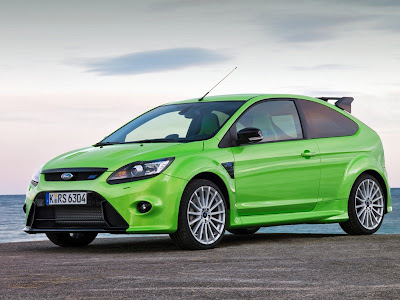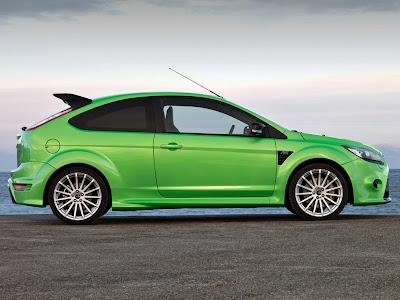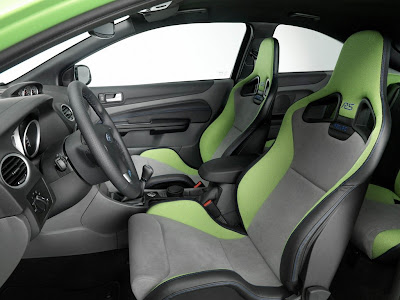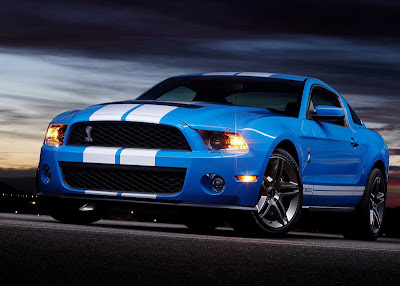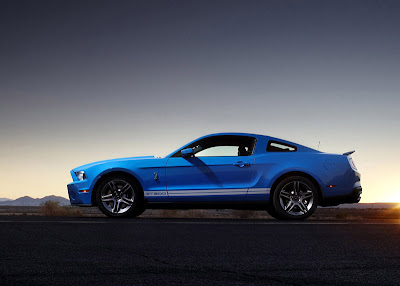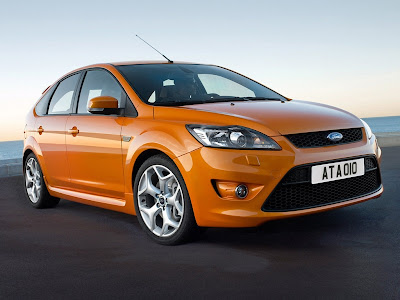BMW M6 Convertible
2010 Lexus Cars Pictures
The next new Lexus: IS C
Depending upon your point of view and your temperament, there's good news and bad news from Lexus regarding the convertible version of the Lexus IS. The good news is the car rounds out the IS lineup, as it is now comprised of a coupe, a convertible and two sedans.
The bad news is primarily for those who expected the sporting edge of the IS line to infuse the convertible as well. In that regard, like the Lexus SC430 before it, the IS C will appeal to the more genteel cruising segment as opposed to the rabid, corner carving, driving enthusiast. And while the marketing for the vehicle might lead you to believe otherwise, when it comes to performance, the IS-C is squarely on the softer side of Lexus.
Two engines and two transmissions are available for the IS C. A 204-horsepower V6 making 185 ft-lbs of torque is the base engine. This can be ordered with either a six-speed manual or a six-speed automatic transmission. The other choice is a 306-horsepower V6 that makes 277 ft-lbs of torque. This engine is offered exclusively with a six-speed automatic. Both offer the legendary smoothness for which Lexus is justifiably well-known.
The folding hardtop is the real story here. Stowing itself in the trunk in about 20 seconds, the top is constructed of aluminum and folds into three sections. When raised, the top doesn’t compromise headroom in the least. When stowed, there is still adequate trunk space for a couple to enjoy a weekend road trip.
It’s a Lexus, so naturally the list of standard equipment is lengthy, some of the highlights include, Bluetooth, power tilt and telescoping steering wheel and puddle lamps in the outside rear view mirrors. Options include the brilliant Marl Levinson audio system with navigation, wood trim, park assist, and rain sensing wipers.
And while the interior of the IS C might not blind one with blingage the way its LS & SC siblings do, it’s still quite the pleasant environment. Despite the coupe configuration, the back seat is spacious enough for two reasonably sized adults to ride comfortably for a short drive. Long distance touring might generate some issues, but quick jaunts around town shouldn’t be a problem at all. The back seat is easy to access as well. A power switch motors the front seats out of the way to let people step into the rear of the passenger compartment.
Interestingly, while the IS familial resemblance is palpable, the IS C shares but one panel with its sedan counterpart. Only the hood is interchangeable. The overall look of the car is pleasant, if not exactly thrilling. The beltline is a bit high for my tastes and some additional sculpting along the sides of the IS C would have added more interest to those broad, flat surfaces. Still, the cumulative look does speak to both luxury and exclusivity – even if you don’t see the stylized “L” badges.
On the road, as we alluded to before, this car is a lot happier cruising with the top down and the music up than it is being pushed to the limits of adhesion in the manner of a sports car. Lexus estimates just under six seconds to 60 with the 3.5 and just over eight seconds to 60 with the 2.5. And while the IS C’s 50/50 weight distribution does endow it with considerable agility, going topless reduced the structural rigidity of the body. If you push the IS C hard into a corner this manifests itself as a slightly mushy feeling. Nothing overtly troubling mind you, but it is apparent to anyone who tests cars for a living. Which could also explain why my attempts to get any word about a potential V8-powered IS C F model were met with assertions that nothing along those lines are in the plan.
However, the Lexus reps did show an F Sport version of the IS C with freer flowing intake and exhaust systems for the 3.5-liter engine. Additionally, there were suspension mods that made the car sit about an inch or so lower, 19-inch tires and wheels (17’s and 18’s come with the base cars) with cross-drilled brake rotors and beefier calipers. On the road, that version of the car felt quite a bit sharper, but none of the representatives present could tell me how much the kit added to the price, how much more power the engine made, or anything substantive about it at all really.
Assembled by TRD (Toyota Racing Development), the kit is available as a dealer-installed option.
But frankly, given that 90 percent of the people who’d consider this car are probably more likely to want to just style, chill, see, and be seen, the standard IS C is – in all likelihood – right on target. Many of you may recall the SC 430 generated similar comments when it was released back in 2002. (And yes, that car is about to be retired, though there’s been no word yet on a replacement for it. However, as well as it’s sold for Lexus, I can’t imagine there won’t be a replacement.)
But I digress.
The point is, product planners at Lexus know their market thoroughly, and you can bet the IS C was developed with their core audience well in mind.
2010 Lexus IS C
Base price: $38,490
Engine(s): 2.5-liter V6, 3.5-liter V6
Horsepower/torque: (2.5) 204@ 6400 rpm/185 ft-lbs @ 4800 rpm
(3.5) 306 @6400 rpm/277 ft-lbs@4800 rpm
Transmission(s): Six-speed manual, six-speed automatic
Drivetrain: Front engine/rear-wheel drive
Corvette GTR is bowing at the 2009 SEMA show in Las Vegas.
These
days, you just can’t build a fast car without carbon fiber; apparently, the guys at Specter Werkes/Sports know that, and they’ve liberally applied the stuff to their Corvette GTR. Chief among the carbon-y items on this wicked Corvette Z06–based machine are the sweet HRE CF40 carbon-fiber wheels, which are wrapped with Michelin Pilot Sport PS2 tires. Weighing in at only 22 pounds each, the wheels reduce unsprung weight, meaning this beast will have even less trouble breakin’ ’em loose and ripping off one massive burnout.
Of course, the stock 505-hp powertrain is perfectly suited to that task even with the factory wheels, but Specter went all nuts under the hood anyway, adding a twin-turbo LS7 from Lingenfelter Performance. As a result, 800 horsepower rumble under the modified hood. StopTech six-piston front and four-piston rear calipers harness all those ponies when its time to slow down.
Backing up the Corvette GTR’s asphalt-annihilating power is one pissed-off and remarkably tasteful body kit, and the car wears attractive custom blue pearl paint from BASF. The headlight housings, front splitter, and mirrors are all matte-finish carbon fiber. A Corsa exhaust system with some rather appalling finishers—really the only misstep to our eyes—rounds out the GTR package, which can be applied to any C6 Corvette of your choice. The Corvette GTR is bowing at the 2009 SEMA show in Las Vegas.
Mazda RX-7 to mark the end of RX-8 in 2010 2011
Mazda Taiki Concept
While Toyota works on getting its FT-86 rear-wheel-drive coupe on the road and as Nissan plans a rival, another Japanese automaker is going to throw its two cents into the segment as well. Sources close to Mazda say that RX-7 should see a revival sometime in early 2011 and will mark the end of the slow-selling and expensive RX-8.
The next-generation Mazda RX-7 will use the company’s new Renesis 16X rotary engine, which made its debut in the Taiki concept. While the 16X is capable of producing 350-hp and 215 lb-ft of torque, Mazda will keep output around the 200-250 range in order to stick the price-tag close to $25,000.
Nissan Skyline Car Gallery 2010
Nissan Skyline More Images and Info 2009 2010
Transmission is 5-speed automatic on all model ranges, with 6-speed manual on Type S and Type SP.
18-inch wheels are used on base and 370GT Type P, while Type S and Type SP includes 19-inch wheels.
In 2009, transmission was changed to 7-speed automatic on all model ranges, with 6-speed manual on Type S and Type SP.
Nissan Skyline
Nissan Skyline
Nissan Skyline
Nissan Skyline

Nissan Skyline
Nissan Skyline
Nissan Skyline


